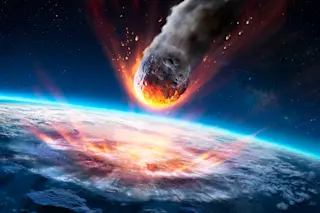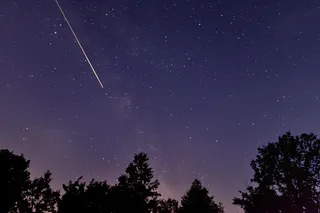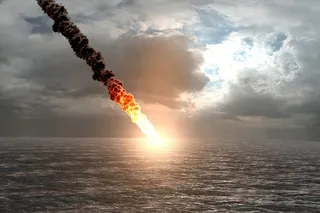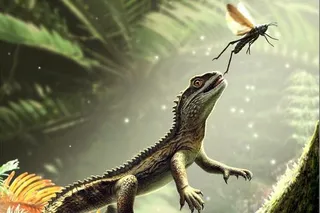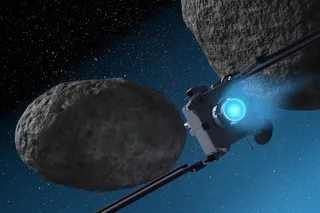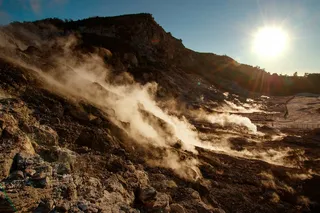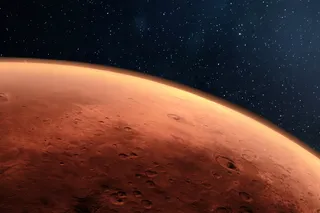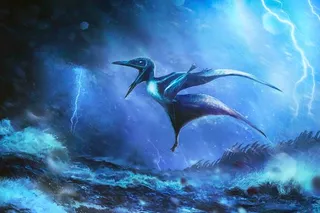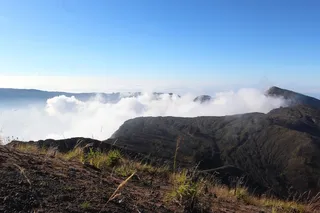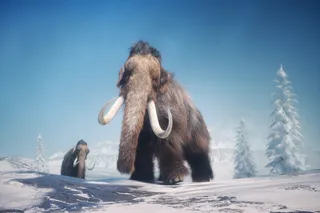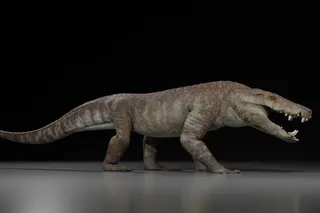A cataclysmic asteroid collision may not sound like the starting place for life. But 66 million years ago, the Chicxulub impactor that wiped out the dinosaurs and much of the Cretaceous period’s fauna also kick-started a hydrothermal system that became a hotbed for life to recover in the local area. That’s the finding from a recent paper published in Nature Communications.
Chicxulub Impact and Rapid Recovery
The impact itself was truly a catastrophe, says Philippe Claeys, Chair of the Large Research Group AMGC at Vrije Universiteit Brussel and a co-author on the paper. When the asteroid – estimated at 10 to 15 kilometers [about 6 miles to 9 miles] in diameter – slammed into the earth it sent vast amounts of energy into the atmosphere, resulting in a massive cloud plume that lead to the collapse of photosynthesis, large-scale cooling, and the demise of up to 70 percent of life on earth, including the dinosaurs.
That extended to the oceans.
“At least for 500,000 years, there's good evidence to show that the world's oceans were not functioning exactly as modern or Cretaceous oceans were,” Claeys says.
Past research found that within decades, the waters around the site recovered quickly. This recent paper suggests that it is because the massive impact and the resultant melt sheet created a hydrothermal system that funneled hot water and nutrients to the surrounding area, enabling this surprisingly quick comeback.
“What is interesting in this new paper is that we teamed up with geochemists, crater specialists, and micropalaeontologists to look at the effect on the biosphere, on the micro plankton within the region surrounding the crater in the Gulf of Mexico,” Claeys says. “The conclusion, that was a little bit surprising, is that the recovery of life seems to be accelerated compared to the rest of the oceans.”
Read More: Two Asteroids May Have Wiped Out The Dinosaurs
Hydrothermal System Funneled Nutrients
That multi-disciplinary team traced levels of osmium – an element found in asteroids like the Chicxulub impactor – in sediments taken from core samples in the crater. Sean Gulick, a research professor at The University of Texas at Austin’s Jackson School of Geosciences, and a co-author on the study, was part of a 2016 drill team that took core samples from the crater. These samples were vital to these recent findings.
He explains that in this instance, osmium acts as a “tracer for all sorts of nutrients that might be enriching the oceans above.”
That showed that the hydrothermal system following the collision was likely funneling nutrients to the ocean above for at least 700,000 years.
“We do know that an asteroid impact with all of this energy, if it's large enough, can cause a mass extinction event globally, because of all the atmospheric effects,” Gulick says. “But it also turns out to be beneficial to life, at least locally.”
Even though the Chicxulub impact resulted in a “kiss of death for dinosaurs,” it also acted as a “cradle for life,” Gulick says.
Possibility of Life on Other Planets
Their research also showed that during the time the hydrothermal system functioned, the type of marine life mainly comprised of plankton species adapted to high-nutrient environments. This shifted to species that thrive in low-nutrient environments over time.
In Gulick’s view, their findings open up the possibility of a mechanism to kick-start life on other planets.
“Everything out there gets smacked with objects flying around. From the original creation of the planets and from collisions in the asteroid belt and everything else,” Gulick says. “Every one of those planets has a way to have their surface changed by impact cratering that then reorganizes things, brings things to the surface, and adds heat.”
As long as there are fluids or ice that could result in a hydrothermal system, Gulick adds. “So, if this is a viable mechanism to get life going, then that means it's entirely possible to have life on a lot of different planets.”
Read More: Did a Dust Plume Kill the Dinosaurs?
Article Sources
Our writers at Discovermagazine.com use peer-reviewed studies and high-quality sources for our articles, and our editors review for scientific accuracy and editorial standards. Review the sources used below for this article
Nature Communications. Prolonged 187Os/188Os excursion implies hydrothermal influence after the Chicxulub impact in the Gulf of Mexico
University of Texas Institute of Geophysics. Life Recovered Rapidly at Site of Dino-Killing Asteroid. A Hydrothermal System May Have Helped.
University of Texas Geosciences. Drilling into Dino Doomsday



